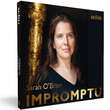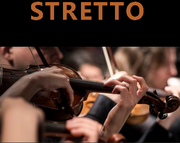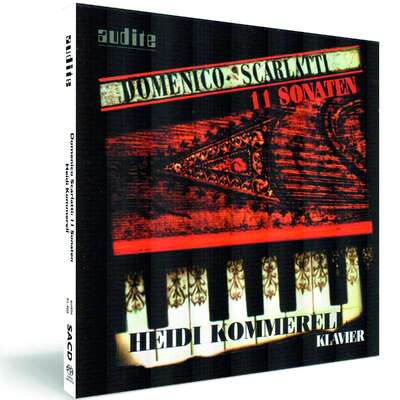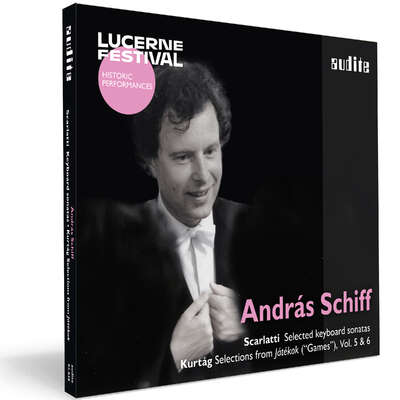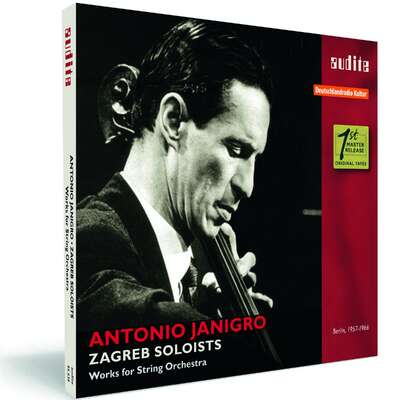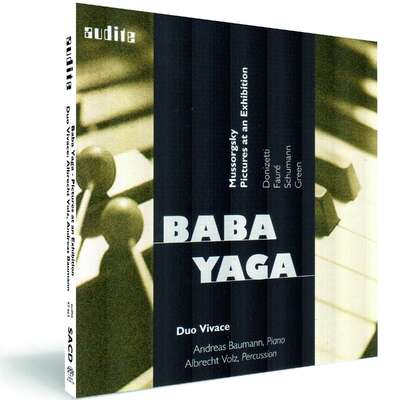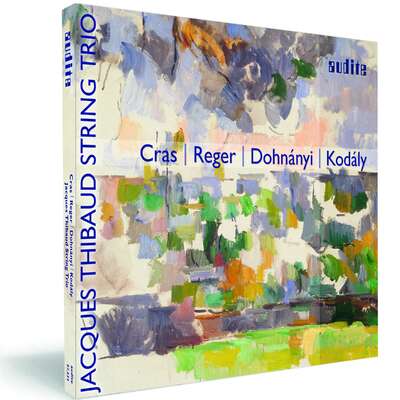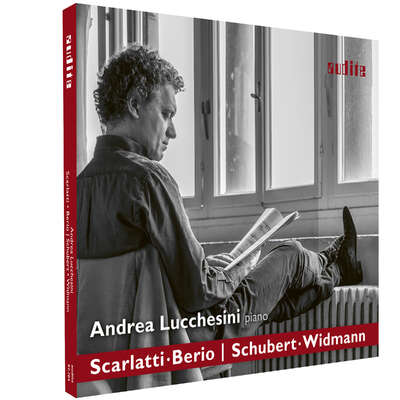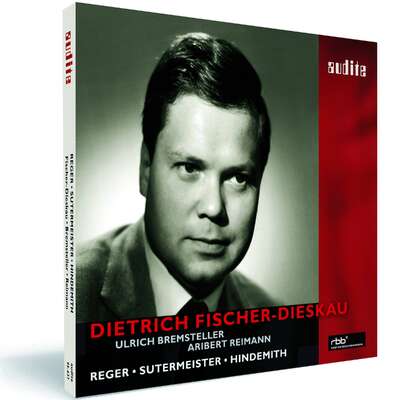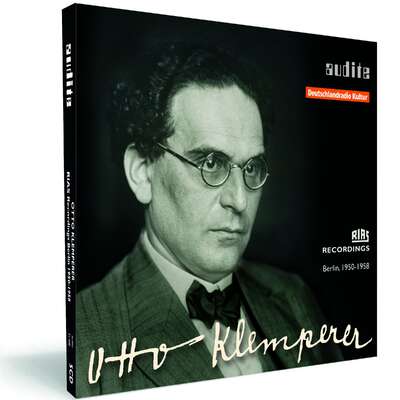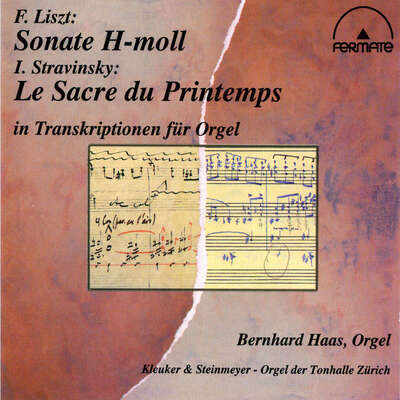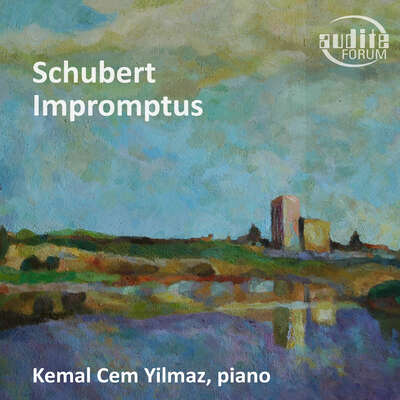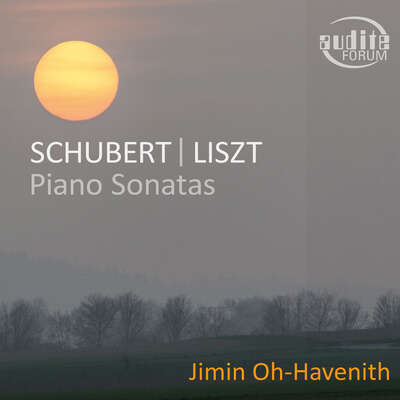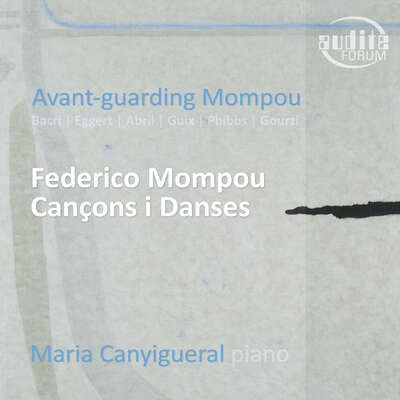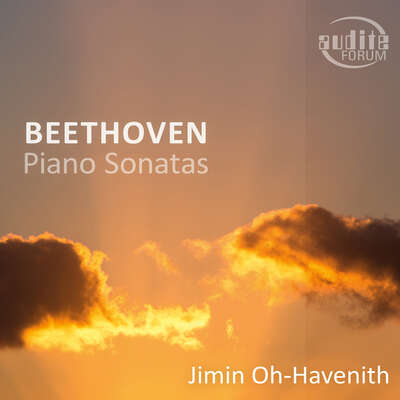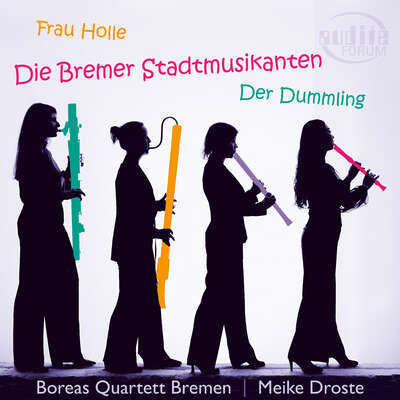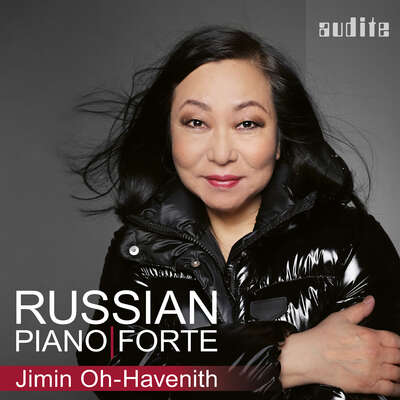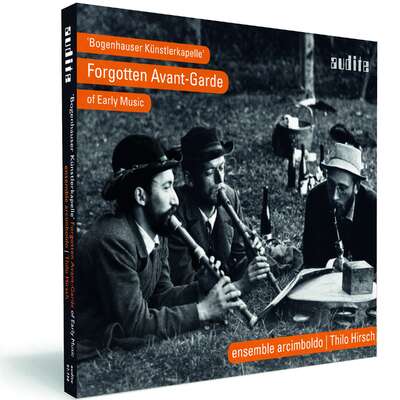
Auto-Rip
Finally, a compendium featuring the complete impromptus for harp. Sarah O’Brien has brought together the well-known works and surprising rarities, enriched with twentieth-century compositions and seasoned with French and Italian jewels from the eighteenth century. Originals and arrangements, ideally suited to the harp.more
"With her superb technique in dynamics and color palette, O’Brien is able to use many nuances to achieve an evocative eloquence that captivates the listener with an intense poetry for 80 minutes." (Pizzicato)
Track List
This bonus track is only available as a download!
Details
| Impromptu | |
| article number: | 97.807 |
|---|---|
| EAN barcode: | 4022143978073 |
| price group: | BCA |
| release date: | 5. August 2022 |
| total time: | 84 min. |
Bonus Material
Informationen
The two great Romantic harp impromptus by Gabriel Pierné and Gabriel Fauré, highlights of the genre, mark the beginning and end of this very special musical journey through the centuries. Between these Romantic "parentheses", we discover worlds of the eighteenth and twentieth centuries.
Sarah O'Brien has arranged Baroque music by Couperin, Rameau, and Scarlatti for her instrument, while also presenting original works written before and after the Second World War - and which themselves hark back to the Baroque era: Jean Cras, Paul Hindemith, Joaquín Rodrigo, and Guy Ropartz draw on old forms such as the canzone, toccata, and sarabande, infusing them with new life.
A diverse compendium of the solo literature for harp - with a variety of sonorities that is both surprising and refreshing.
Reviews
Nineteenth-Century Music Review | February 2024 | Noël Wan | February 1, 2024 | source: https://www.camb...
For listeners unfamiliar with original harp repertoire, O’Brien’s Impromptu offers the opportunity to hear the harp played masterfully, with the range and depth that comes from years of a harpist familiarizing herself with the sound world of this instrument. Through an eclectic collection of standard and uncommon repertoire, she seeks to present the harp in its natural, impromptu state – absent of contrived techniques or mechanical interventions.Mehr lesen
Schweizer Musikzeitung | Mai 2023 | Sibylle Ehrismann | May 1, 2023 | source: https://www.musi... Harfen-Trouvaillen
Sarah O’Brien hat zum Teil kaum bekannte Impromptus für Harfe gesucht und gefunden. Es sind lohnende Stücke, die die klanglichen Eigenheiten desMehr lesen
Die Basler Harfenistin Sarah O’Brien legt mit Impromptu ihr zweites Solo-Album vor. Sie nutzte die schwierige Corona-Pause, um ihren lange gehegten Wunsch zu verwirklichen. Auf ihrer ständigen Suche nach originalen Harfenstücken, die zum Teil noch in Archiven schlummern, ist sie fündig geworden. Man staunt, wie viele der hier versammelten man so gut wie nie im Konzertsaal hört. Sich in diese originell zusammengestellte CD reinzuhören, lohnt sich unbedingt.
Impromptus passen ausgezeichnet zur Harfe, es sind Charakterstücke, haben aber auch etwas Improvisatorisches. Etwa das Impromptu para arpa von Joaquín Rodrigo (1901–1999), von dem man vor allem das Gitarrenkonzert kennt. Oder dann das klangschöne Impromptu von Joseph Guy Marie Ropartz (1864–1955), der ja mit César Franck befreundet war, den man als Komponisten aber kaum kennt. Einige Stücke sind von der bekannten italienischen Harfenistin Clelia Gatti Aldrovandi (1901–1989) inspiriert. Sie arbeitete – wie dies auch Sarah O’Brien tut – mit mehreren Komponisten zusammen, um neue Werke für ihr Instrument zu bekommen. So hat nicht nur Paul Hindemith seine Harfensonate in enger Zusammenarbeit mit Gatti Aldrovandi geschrieben. Auch Nino Rota (1911–1979) und Virgilio Mortari (1902–1993) liessen sich von ihr zu Harfenkompositionen motivieren, in denen sie auf alte Tänze wie Sarabande oder Gaillarde zurückgriffen.
Man hört diesen Werken gut an, dass sie ausgesprochen harfengerecht geschrieben sind. Sie bringen viele Facetten des Instruments zur Geltung, ohne effekthascherisch zu sein. Sarah O’Brien weiss diese raffiniert auszukosten. So kommen etwa in Hindemiths Sonate die ruhig ausgebreiteten klangfarblichen Eigenarten wunderbar zum Tragen.
O’Brien war über 20 Jahre Solo-Harfenistin im Concertgebouw-Orchester Amsterdam und bei den Münchner Philharmonikern, bevor sie Professorin an den Musikhochschulen in Zürich und Basel wurde. Mehrere ihrer Studentinnen und Studenten sind Preisträger internationaler Wettbewerbe. Als Solistin trat sie unter Bernhard Haitink, Hans Vock und Hartmut Haenchen auf, aber auch mit dem Orchestre de la Suisse Romande unter Fabio Luisi und Árpád Gérecz. Zu erleben war sie zudem mit dem Basler Sinfonieorchester und den Kammerorchestern von Basel und Zürich.
Ihre reiche künstlerische Erfahrung kommt nicht nur in den interpretatorischen Qualitäten dieser neuen CD-Einspielung zur Geltung, sondern auch in der dramaturgischen Zusammenstellung der Stücke. Sie ist kontrast- und abwechslungsreich. Die Kompositionen aus dem französischen Barock hat O’Brien selber arrangiert. Es sind zwei lautmalerische Stücke von Jean-Philippe Rameau mit den Titeln Le rappel des oiseaux und La poule, dazu kommt das humorvolle Le Tic-Toc- Choc von François Couperin.
All diese Kostbarkeiten rahmt O‘Brien mit den beiden gewichtigsten und noch am ehesten bekannten Stücken ein: dem Impromptu-caprice op. 9 von Gabriel Pierné (1863–1937) und dem Impromptu Des-Dur op. 86 von Gabriel Fauré (1845–1924). Man muss nicht Harfenfan sein, um diese CD mit Genuss zu hören.
concerti - Das Konzert- und Opernmagazin | 22. März 2023 | Eckhard Weber | March 22, 2023 | source: https://www.conc...
Fantastisches Panorama
Mit improvisatorischem Elan beweist Sarah O'Brien mustergültig den klanglichen Facettenreichtum der Harfe.
Derart facettenreich, dass kein Zweifel bestehen kann: O’Brien ist mit sämtlichen Geheimnissen ihres Instruments vertraut. Ein fantastisches Panorama ist hier zu erleben.Mehr lesen
Stretto – Magazine voor kunst, geschiedenis en muziek | januari 13, 2023 | Michel Dutrieue | January 13, 2023 | source: https://www.stre... Ontdek Jean Cras (1879-1932) en Virgilio Mortari (1902-1993) op de cd, “Sarah O’ Brien, Impromptu”, op het label audite. Magisch!
Met deze bijzonder mooie cd verscheen een uniek compendium met de complete impromptus voor harp. De harpiste, Sarah O’Brien bracht bekende werken enMehr lesen
De term ‘impromptu’ verscheen voor het eerst op in 1817, in de Allgemeine musikalische Zeitung, als term door een redacteur gebruikt voor de omschrijving van een pianowerk van Jan Václav Hugo Voříšek. Het duurde niet lang voor de eerste generatie romantische componisten het idee overnam. Jan Václav Hugo Voříšek behoorde samen met Dušek, Václav Jan Křtitel Tomášek, Antonín Rejcha en Koželuh, tot de belangrijkst, Boheemse componisten van het einde van de klassieke periode. Zijn invloed op de pianomuziek van latere componisten was aanzienlijk. In niet-vocale muziek werd de titel ‘ballade’ gebruikt voor pianowerken op basis van literaire modellen, bv. in de vier balladen van Chopin, gecomponeerd tussen 1831 en 1843, gebaseerd op o.a. gedichten van Adam Mickiewicz, of Brahms’, op. 10 uit 1856, naar Herder. Later werden door Liszt, Brahms of Grieg, naar de voorbeelden van deze van Václav Jan Křtitel (Johann Wenzel) Tomášek en Jan Václav Voříšek, balladen gecomponeerd als los van een bepaalde tekst staande, zelfstandige, romantisch-lyrische karakterstukken. Daarnaast zou Schubert zijn 6 Moments musicaux, D. 780 (op. 94) gecomponeerd hebben onder invloed en naar het voorbeeld van de Impromptus, op. 7, uit 1822, van Jan Václav Voříšek en deze van Heinrich Marschner (1795-1861).
Schuberts magnifieke 8 Impromptus uit 1827, waren karakterstukken. Vol rijke lyriek, waren ze weliswaar veel meer dan kleine toevalligheden “à l’improviste”, zoals de titel liet vermoeden. De Impromptus, gecomponeerd tijdens een vakantie in Graz, werden gepubliceerd in twee sets van elk vier Impromptus. De eerste twee stukken van de eerste set werden in 1827 tijdens het leven van de componist, door Haslinger in Wenen gepubliceerd als op. 90. De derde en vierde van de eerste set werden gepubliceerd in 1857. De tweede set werd in 1839 postuum gepubliceerd als op. 142, met een opdracht toegevoegd door de uitgever, aan Franz Liszt. De twee sets zijn nu gecatalogiseerd als respectievelijk D. 899 en D. 935. Ze worden terecht beschouwd als één van de belangrijkste voorbeelden van het fijn en populair Biedermeier genre in het Wenen van de vroege 19de eeuw.Fauré: 15 facts about the Great Composer - Classic FM
De pianomuziek van Fauré bestaat o.a. uit 3 “Romances sans paroles” op. 17 (uit ca. 1863), 13 Nocturnes (1875-1921) en 13 Barcarolles (1881-1913), 5 Impromptu’s (1881-1910), 4 Valses-Caprices (1882-1894), Dolly (1893-1896) (suite), georkestreerd door Henri Rabaud, Thema & variaties in cis-klein, op. 73 (1895), 8 Pièces brèves (1899-1902) en 9 Préludes (1909-1910). Gabriel Fauré (1845-1924) componeerde Mélodies, kamermuziek, orkestwerken en koorwerken. Sommige van zijn pianocomposities, gecomponeerd tussen 1860 en 1920, behoren tot zijn bekendste werken. Zijn belangrijkste pianowerken zijn de nocturnes, barcarolles, impromptu’s en de valses-caprices. Deze werden gecomponeerd in verschillende decennia en tonen Fauré’s stijlevolutie, van eenvoudige en jeugdige charme, over de introspectie van de turbulente periode in het midden van zijn leven, tot zijn laatste raadselachtige stijl. Andere opmerkelijke pianostukken, waaronder kortere werken of compilaties zijn de “Romances sans paroles”, de Ballade in Fis, de Mazurka in Si bémol, Thema en Variaties in C en de acht “Pièces brèves”. Voor pianoduo componeerde Fauré de “Dolly Suite” en samen met zijn vriend en oud-leerling André Messager, de uitbundige parodie op Wagner “Souvenir de Bayreuth”. Het merendeel van de pianomuziek is moeilijk om spelen, maar is zelden uitgesproken virtuoos. De componist hield eerder van klassieke en sobere terughoudendheid.
De enkelpedaalharp is een harp waarbij men elke noot afzonderlijk door een pedaal kan verhogen of verlagen. Het instrument telt zevenendertig snaren en zeven pedalen, waarmee de zeven noten van de toonladder kunnen worden gespeeld. Net zoals de dubbelpedaalharp heeft ook deze harp zeven pedalen, maar elke pedaal kan hier slechts in twee verschillende standen worden gezet. Bij de dubbelpedaalharp, in drie. Door pedalen te gebruiken kon de speler meer gecompliceerde harmonieën en chromatische melodieën spelen.Louis XV Special - Premium Harps - Lyon & Healy Harps
Het instrument werd in 1720 uitgevonden in Duitsland door Celestin Hochbrucker. Zijn (single-action) pedaalharp werd vervolgens verbeterd door Georges Cousineau, en in 1792, door Sébastian Érard. Omstreeks 1780 verving Georges Cousineau nl. de haakjes bovenaan de snaren door pennetjes om ervoor te zorgen dat de as van de snaar niet meer zou verschuiven en het akkoord langer kon worden aangehouden. In 1728 werd zo’n harp aangeboden aan keizer Karel VI en ten tijde van zijn dochter keizerin Maria Theresa (sinds 1740), veroverde dit instrument Wenen en andere Europese centra. Toen haar dochter, Marie-Antoinette, in 1770 naar Parijs ging, had ze een dergelijke harp bij zich.
De dubbelpedaalharp daarentegen, is de verbeterde vorm van de enkelpedaalharp. Hierop kan met pedalen elke noot met een halve toon worden verlaagd of verhoogd door de pedaal naar boven of beneden te verzetten. Dit type harp werd in 1810 door de Franse harpbouwer Sébastien Erard uitgevonden om de harp aan te passen aan de modulerende muziek zonder dat er een extra rij snaren moest worden aangebracht, zoals bij de chromatische harp. De dubbelpedaalharp is doorgaans de meest bespeelde harp voor gevorderde harpisten (vaak beginnen harpisten met een goedkopere Keltische harp). In praktisch alle grotere symfonische orkesten is deze harp terug te vinden.
Op het programma staat werk van o.a. Gabriel Pierné (1863-1937), Francois Couperin (1668-1733), Jean Cras (1879-1932), Jean Philippe Rameau (1683-1764), Paul Hindemith (1895-1963), Joaquin Rodrigo (1901-1999), Reinhold Glière (1875-1956), Joseph Guy Ropartz (1864-1955), Domenico Scarlatti (1685-1757), Nino Rota (1911-1979), Albert Roussel (1869-1937) en Gabriel Fauré (1845-1924).
Sarah O’Brien studeerde aan het Conservatoire de Musique de Genève bij Catherine Eisenhoffer en sloot haar studie af met een premier prix de virtuosité in 1991. Verdere studies deed ze bij Pierre Jamet, Parijs en Susann McDonald, Indiana University, School of Music, Bloomington, VS. Ze was prijswinnaar van het Concours d’execution musicale (CIEM) Genève in 1997, 1991-1994 winnaar van de studiebeurs van de Ernst Goehner Stiftung Zürich, 1988-1998 harpiste van het Sabeth Trio Basel en winnaar van de Zwitserse kamermuziekwedstrijd Migros. Een aantal internationaal bekende componisten, zoals Kaija Saariaho, Nicolaus A.Huber, Rudolf Kelterborn en Walter Feldmann hebben werken aan het Trio opgedragen. Haar positie als eerste harpiste van twee van ’s werelds meest gerenommeerde orkesten, heeft haar geleid op tournees door Europa, Azië en de VS en concerten in de beroemdste zalen ter wereld.
Sarah O’Brien harp is een buitengewoon veelzijdige harpiste die bewijst dat de harp zich niet langer laat beperken tot een smal romantisch kader, maar een eigen stem heeft, van barok tot hedendaagse muziek. Sarah O’Brien is al meer dan 20 jaar soloharpiste bij het Koninklijk Concertgebouworkest Amsterdam en de Münchner Philharmoniker. In 2014 besloot ze haar werk te concentreren op haar lesgeven en meer tijd te besteden aan haar studenten. Ze is professor harp aan de University of Arts Zurich en de University of Music, Bazel. Haar studenten zijn prijswinnaars van internationale concoursen en winnaars van orkestposities. Voor haar posities in Zwitserland was Sarah O’Brien naast haar werk in het orkest professor aan het Mozarteum Salzburg en de Muziek Hogeschool in Rotterdam. Ze doceerde als gastprofessor aan de Muziekuniversiteiten van München en Amsterdam, de Sibelius Academy Helsinki, de Juillard School New York en de zomercursussen in Montepulciano, Italië. Ze is jurylid bij internationale concoursen en orkestaudities.
Fono Forum | November 2022 | Jürgen Schaarwächter | November 1, 2022
Musik des französischen Impressionismus und Postimpressionismus sowie Werke von Hindemith, Rota oder Rodrigo aus dieser Epoche stehen wenigenMehr lesen
www.musicweb-international.com | October 11, 2022 | Nick Barnard | October 11, 2022 | source: http://www.music...
The publicity for this new release states; “finally, a compendium featuring the complete Impromptus for harp.” Although no expert at all on theMehr lesen
Of course a major “why” is the stunning playing of harpist Sarah O’Brien caught in rich and full sound by the Audite engineers. Although this is offered in just standard CD format (O’Brien’s previous Audite disc I see was a SACD) this is of demonstration class with the tonal and dynamic range of O’Brien’s playing quite beautifully caught. I must admit I expected this to be a “dip-into” disc – with individual pieces attractive and interesting but perhaps becoming a little wearing to experience in a single sitting. Not so at all – the sheer range and juxtapositions of musical styles makes for a compelling listen with the totality of the recital adding to the stature of individual works. The programming is intelligent and satisfying. The two ‘famous’ Impromptus are used to bookend the disc opening with the Pierné Impromptu-Caprice Op 9 and closing with Fauré’s Impromptu in D-flat major Op 86. In the liner – which takes the form of a “conversation” between O’Brien and Dr. Florian Hauser – Ms O’Brien makes the point that Fauré was helped by harpist Micheline Kahn to ensure that the piece was idiomatic and effective for the instrument. Elsewhere in the recital Ms O’Brien points to the influence of Italian harpist Clelia Gatti Aldrovandi who offered similar help to Hindemith, Mortari and Rota and without whom, she believes, Hindemith would not have been able to write the work he did. Wonderful though these two Impromptus are, a major part of the delight in this disc is the range of musical expression it contains. These two famous works have become a kind of aural shorthand for how a harp sounds with the music arabesquing away with arpeggios and hazy glissandi. Of course this is deeply characteristic and very beautiful but through her playing and her choice of repertoire O’Brien shows there is so much more muscle and sinew in harp playing as well alongside grace and elegance.
The Nino Rota Sarabanda e Toccata [tracks 14-15] and the Mortari Sonatina prodigio [16-18] are just two cases in point. The former opens with a neo-classical bardic sarabande with wonderfully rich and full chords and a stately elegance before the flowing toccata provides an attractive contrast. The Mortari follows similar neo-baroque lines with the opening Gagliarda reminiscent of Respighi in Ancient Airs and Dances mode. Intriguingly there appears to be almost no music by Virgilio Mortari in the recorded music catalogue [another version of this sonatina appears on the tactus label and a third performance on Naxos] although I do have sheet music of a rather nice arrangement for string quartet by him of Corelli’s La Follia. These modern reinterpretations of a baroque aesthetic sit very well alongside O’Brien’s own arrangements of baroque keyboard pieces. One – Rameau’s La poule [track 6] is instantly familiar in Repsighi’s orchestral garb as part of his suite The Birds. Another – track 2 – is Couperin’s charming Le Tic-Toc-Choc which bubbles along like a latter-day musical box quite delightfully. Apart from any musical merits, this piece shows the remarkable poise and control of O’Brien’s playing. The balance between the leading melody line and the gentle filigree of the accompaniment is stunningly achieved. In the liner/conversation O’Brien makes the point that she plays all the music in this recital on the same instrument and that the tonal range she achieves is down to technique and a profound understanding of how to manipulate the sound from the instrument. I emailed audite to query the instrument used because it sounds so beautiful and received the following reply from Ms O’Brien herself; “The harp is a concert grand harp (so only slightly smaller than a nowadays concert grand harp) but not smaller than a concert harp. In other words: The harp is an old Lyon&Healy style 17, made in Chicago. Harps in those days were slightly smaller (in height) than the harps made today.” All I can add to that is that it sounds magnificent throughout.
The placement of this Couperin work after the Pierné and before the two Jean Cras Impromptus is a good example of how skilful programming adds an intangible value to the entire disc. The crystalline beauty of the Couperin can be thought of as cleansing the aural palette before the impressionistic warmth and richness of the Cras. In recent years Jean Cras has been one of my most cherished composer discoveries but I had not yet encountered these two Impromptus and they are a pair of absolute gems. Enhanced no question by O’Brien’s poised and poetic playing. The first is marked Lent and this is very much in the tradition of the kind of French Impressionism that typifies this style of music as indeed does the companion Animé. Apparently these works are now being performed as ‘standards’ after years of neglect which does not surprise me at all.
Familiar to the harp fraternity but less well-known outside of it is the aforementioned Hindemith Sonata for Harp [tracks 7-9]. At a total playing time just short of eleven minutes this is the longest work on the disc and another work completely new to me but it proves to be an impressive and wholly convincing work. O’Brien points out that the Hindemith, Mortari and Rota works were all written around World War II and she suggests that their use of older musical forms (the Hindemith references an 18th century poem) was “an expression of longing for a past, purportedly idyllic world”. I wonder whether another consideration are the two main “limitations” of the modern harp; the fact that only eight fingers can be used at any one time and also that even with the most dextrous pedalling the rate of achievable harmonic change is slower than on other instantly chromatic instruments. Clarity of texture and relative harmonic stability are characteristics of classical and neo-classical music that are more aligned with the practicalities of harp playing. In the liner Ms O’Brien makes it clear that in her own arrangements of baroque music – the Scarlatti Sonata in E major K.380 is another unexpected delight – she is not seeking to simply emulate a harpsichord. Clearly the two instruments share the basic principle of plucked strings but the range of tone and timbral contrasts achieved here on the harp is way beyond that of a harpsichord and O’Brien’s control of that expressive range and her subtle use of rubato throughout the entire disc is of the very highest calibre.
The remaining works in the programme are a group of less well-known works even when the composers themselves are familiar names. Roussel’s work is the best known of these and dates from a period of rich and original creativity. The opus number of 21 places it after the unique Padmâvatî and the quirky Le festin de l'araignée but before Pour une fête de printemps or the Symphony No 2. It has quite bare textures and harmonies but shares the improvisational quality that O’Brien sees as a defining characteristic of the harp impromptu. Again the sheer lightness and clarity of articulation here is a joy. I must admit to enjoying Reinhold Glière’s Impromptu a lot. This is an unashamedly diatonic and song-like work that I suspect was warmly approved of by the Soviet State given its rather old-fashioned character for its 1947 composition date. The sheer depth of tone achieved on this recording is a wonder. The final Impromptus come from Guy Ropartz and Joaquin Rodrigo. Two works I had never heard but both again very attractive. Do not expect many/any Iberian influences in the Rodrigo – an innocent ear would have trouble placing this work’s nationality but that does not detract from its appeal. Likewise the Ropartz which was published in 1927 is very much in the tradition of the preceding French works. As an aside, I wonder why no British composers wrote any harp Impromptus?
As should be clear by now, this is a disc and a recital that has impressed me in every respect; wonderful music intelligently programmed played with sovereign technique and musical insight, beautifully recorded and attractively presented. I will leave the last word to Ms O’Brien who says in the liner; “I want to show the harp is not just a harp or a “cliché” but a fabulous instrument” – to which I would just add fabulously played. An unexpected contender for one of my recordings of the year.
Rondo | N° 1269 - 03.-09.09.2022 | Corina Kolbe | September 3, 2022 | source: https://www.rond...
Gegensätze ziehen sich an
Auf ihrem neuen Album verknüpft die Schweizer Harfenistin romantisches Kernrepertoire auf kreative Weise mit Moderne und Barock.
die Künstlerin verbindet Moderne und Barock und erweitert das beliebte romantische Harfen-Kernrepertoire in alle Richtungen.Mehr lesen
www.pizzicato.lu | 05/08/2022 | Remy Franck & Guy Engels | August 5, 2022 | source: https://www.pizz... Viel Poesie in einem Harfenprogramm
(REMY FRANCK) Sarah O’Brien, langjährige Soloharfenistin des Concertgebouw Orchesters Amsterdam und der Münchner Philharmoniker und seit 2014 alsMehr lesen
Sarah O’Brien hat ein wunderbares musikalisches Gespür für diese Werke, von denen einige von impressionistischen und symbolistischen Einflüssen geprägt sind, wobei die Musik sich oft zwischen Erzählung und Träumerei bewegt. Mit ihrer großartigen Technik in Dynamik und Farbpalette kann O’Brien mit vielen Nuancen eine suggestive Eloquenz erzielen, die den Zuhörer mit einer intensiven Poesie 80 Minuten lang fesselt.
Sarah O’Brien longtime principal harpist of the Concertgebouw Orchestra Amsterdam and the Munich Philharmonic and established as a pedagogue since 2014, devotes her new CD to a predominantly French repertoire with some gems from Italy, Germany and Spain. Seven impromptus are among them, which certainly justifies the CD’s title.
Sarah O’Brien has a wonderful musical feeling for these works, some of which are marked by impressionist and symbolist influences, with the music often moving between narrative and reverie. With her superb technique in dynamics and color palette, O’Brien is able to use many nuances to achieve an evocative eloquence that captivates the listener with an intense poetry for 80 minutes.
(GUY ENGELS) «Das Thema der Impromptus hat mich besonders fasziniert, weil es das Improvisatorische in sich hat, das direkt im Moment Entstehende», schreibt Sarah O’Brien im Booklet ihres neuen Albums Impromptu. Die langjährige Solo-Harfenistin des Amsterdamer Concergebouw und der Münchner Philharmoniker hat sich mit dieser Aufnahme einen Herzenswunsch erfüllt: Sämtlich Original-Impromptus für die Harfe einzuspielen. Dass sich dazwischen einige Bearbeitungen einschleichen (Rameau, Couperin, Scarlatti) tut der Vielfältigkeit des Programmes nur gut.
Was ein Herzenswunsch ist, wird auch mit viel Herzblut, mit viel Liebe und Einfühlungsvermögen interpretiert. Oft beschränkt man die Harfe ja auf ihre Glissandi-Funktion, auf die perlenden Klänge, die sie produziert. Selbstverständlich kann die Harfe viel mehr, und Sarah O’Brien liefert den stichhaltigen Beweis. Sie lässt ihre Harfe in allen Schattierungen singen, mal frisch-fröhlich, mal nachdenklich-poetisch. Dabei setzt sie sehr gekonnt und dramaturgisch schlüssig für den relativ freien Umgang mit den Tempi ein. Sarah O’Brien lässt ihrem Instrument und der Musik immer den nötigen Raum zu klingen, phrasiert sehr schön und transparent, auch wenn die Musikerin behauptet «wir haben ja auf unserem Instrument keinen Atem und keinen Bogen». Rein technisch mag das zutreffen, musikalisch belehrt uns Sarah O’Brien allerdings eines Besseren.
«I was particularly fascinated by the theme of the Impromptus because it has the improvisatory in it, the directly arising in the moment,» writes Sarah O’Brien in the booklet of her new album Impromptu. The longtime principal harpist of the Amsterdam Concergebouw and the Munich Philharmonic has fulfilled her heart’s desire with this recording: To record all original impromptus for the harp. The fact that a few arrangements sneak in between (Rameau, Couperin, Scarlatti) is only good for the diversity of the program.
What is a heart’s desire is also interpreted with a lot of heart, love and empathy. The harp is often limited to its glissandi function, to the pearly sounds it produces. Of course, the harp can do much more, and Sarah O’Brien provides solid proof. She makes her harp sing in all shades, sometimes freshly cheerful, sometimes thoughtfully poetic. She uses the relatively free handling of the tempi very skilfully and dramaturgically conclusively. Sarah O’Brien always leaves her instrument and the music the necessary space to sound, phrases very beautifully and transparently, even if the musician claims «we have no breath and no bow on our instrument». Technically this may be true, but musically Sarah O’Brien proves us wrong.
